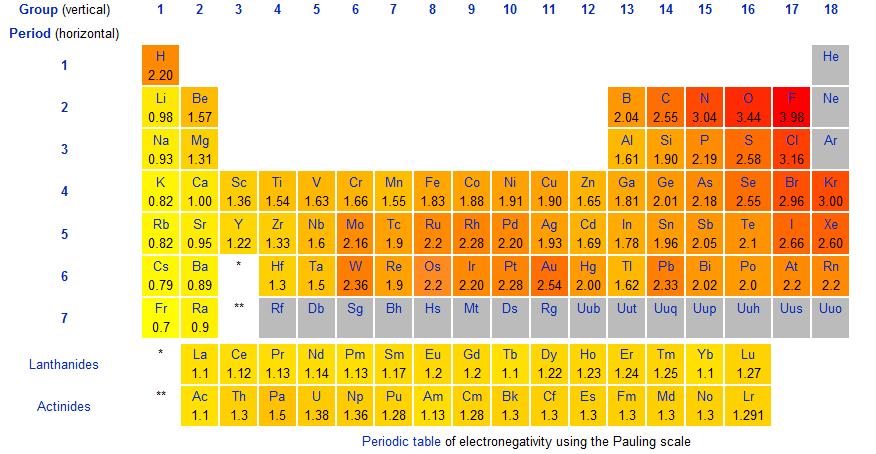We are going to talk about different kinds of chemical bonding.
A few basics;
-only valence electrons are used for chemical bonding to gain a stable octet
There are 3 main types of chemical bonding:
1. Ionic Bonding: electrons are transferred
2. Polar Covalent Bonding: electrons are shared unequally
3. Non- polar covalent Bonding: electrons are shared equally
1. Ionic Bonding
In Ionic Bonding there are 2 ions:
CATions: Metal ions which tend to loose electrons
ANions: Non metal ions which tend to gain electrons.
From this, we can determine that ionic bonds very strongly bonded together which means that they have high melting temperature
Pretty simple?
Now on to polar and non polar covalent ions
Basically, non-polar covalents are the covalent bonds that we've looked at in past chemistry lessons?
And now you are thinking, how can you tell the difference?

This is the Pauling scale and this tells you the electronegativity of the atoms in the periodic table.
If the energy difference is more than 1.8 it is IONIC
If the energy difference is less than 0.5 it is NON-POLAR COVALENT
If the energy difference is between 0.5 and 1.8 it is POLAR
POLARITY
this means the electrical balance of a molecule
Non polar covalents have same electrical balance
Polar covalents have an imbalance of electrons
Few more things to know:
A dipole(no its not a mutation of a tadpole...): when one side of the molecule is positive and the other negative.


No comments:
Post a Comment